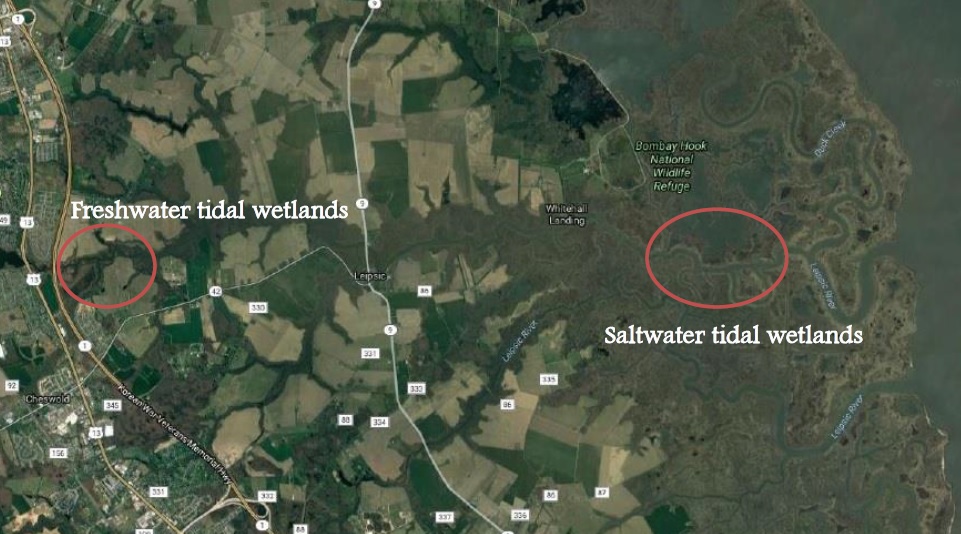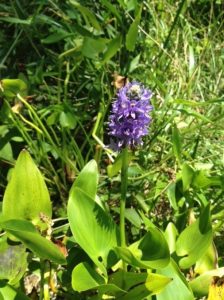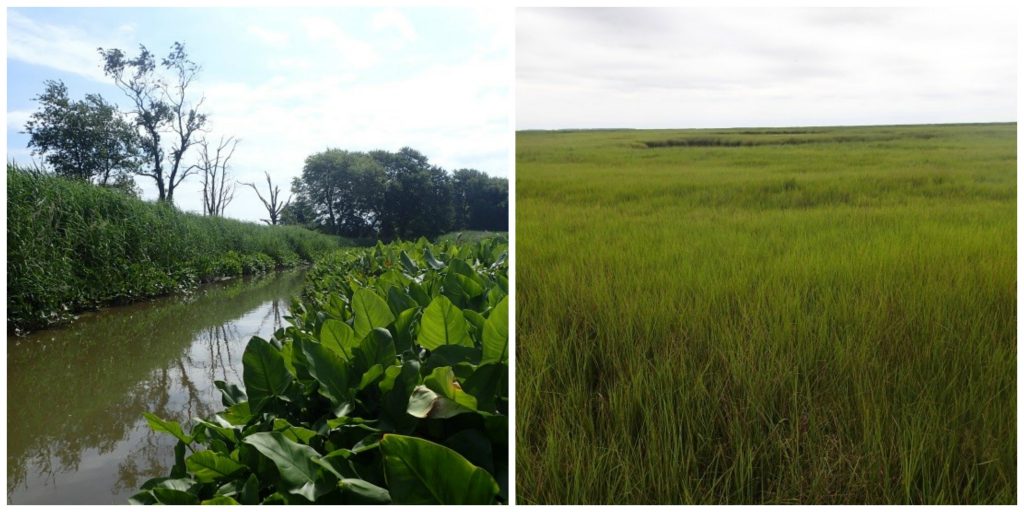
Facebook Twitter Instagram YouTube RSS Feed
Written on: September 19th, 2017 in Wetland Assessments
You may already be aware that saltwater wetlands are influenced by ocean tides, and that freshwater wetlands located further inland are not influenced by tides.
But, did you know that there are freshwater wetlands that are actually still influenced by the ocean’s tides?
These wetlands, commonly called tidal freshwater wetlands, are in some ways similar to other wetland types. For example, tidal freshwater wetlands provide many of the same services that other wetland types provide, including floodwater storage, improvements to water quality, and wildlife habitat.
Tidal freshwater wetlands also experience some of the same problems that other wetland types experience, including the presence of invasive species like the common reed (Phragmites australis), and the presence of development or agriculture in the area surrounding the wetland.
However, tidal freshwater wetlands are also different in many ways from other wetland types. Though not an all-inclusive list, here are two big ways that tidal freshwater wetlands differ from their other wetland counterparts:

Shown above is an aerial view of the Leipsic River in Kent County, Delaware. Circled in red on the left is an example of an area with tidal freshwater wetlands, and circled in red on the right is an example of an area with saltwater tidal wetlands. Notice that the freshwater tidal wetlands are further upstream (i.e., further from the Delaware Bay, inland) than saltwater wetlands.

This flowering plant is pickerelweed (Pontedaria cordata), a common plant found in both non-tidal and tidal freshwater wetlands but not in salt marshes.
Plant Community: Tidal freshwater wetlands tend to have a lot of the same plant species as non-tidal freshwater wetlands, such as arrow arum (Peltandra virginica), annual wild rice (Zizania aquatica), big cordgrass (Spartina cynosuroides), water smartweed (Polygonum punctatum), pickerelweed (Pontedaria cordata), broadleaf arrowhead (Sagittaria latifolia) and spatterdock (Nuphar species); however, these plant communities differ greatly from those found in salt marshes. Smooth cordgrass (Spartina alterniflora) or saltmeadow cordgrass (Spartina patens) commonly dominates salt marsh communities, whereas they are often completely absent in tidal freshwater wetlands. Additionally, tidal freshwater wetlands usually have much more plant diversity than salt marshes, meaning that there tends to be a higher number of species present in tidal freshwater wetlands compared with salt marshes.

These two pictures show the contrast between common plant communities in Right: A salt marsh (Leipsic River watershed, summer 2013), and Left: A tidal freshwater marsh (Red Lion watershed, summer 2017).
Now that you know a little bit about these wetlands, your next question might be: do we, WMAP, assess the condition of tidal freshwater wetlands in Delaware? Our answer: Yes!
Throughout this summer (2017), we have been assessing wetlands in the Red Lion watershed in New Castle County. Many of our tidal wetland sites thus far have been freshwater tidal wetlands. We can determine if a site is a freshwater or saltwater tidal wetland by measuring the salinity of the water, looking at the plant community, and looking at its position in the landscape using aerial photos.
To learn more about other wetland types that we have in Delaware, visit the Delaware Wetlands website and our blog post about Delaware’s Unique Wetlands.